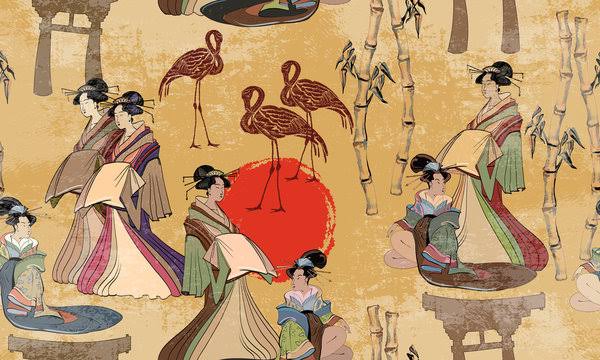Introduction
The world is full of unique cultural practices and traditions that offer a glimpse into the diverse ways people live and celebrate their heritage. One such tradition that has captivated the curiosity of many is nikabeia. If you’re unfamiliar with the term, you’re not alone. This ancient custom, steeped in history and cultural significance, is lesser-known but holds great importance for those who practice it. In this blog post, we’ll explore what nikabeia is, where it originates, and why it remains a cherished tradition. Whether you’re a culture enthusiast or simply curious about different customs, this journey into the world of nikabeia promises to be enlightening.
What is Nikabeia?
Nikabeia is a traditional ceremony or ritual that has been practiced for centuries in certain communities. While its specific origins are somewhat obscure, it’s believed to be rooted in ancient religious or spiritual practices. The ceremony typically involves a series of symbolic actions, chants, and offerings, all intended to honor ancestors, deities, or natural forces. Each community that practices nikabeia has its unique variations, but the core essence remains the same—it’s a way to connect with the past, seek blessings, and maintain harmony within the community.
Origins and Cultural Significance
The exact origins of nikabeia are difficult to pinpoint, as it’s a tradition passed down orally through generations. However, it is widely recognized in various indigenous cultures, particularly in regions of Africa and the Pacific Islands. In these cultures, nikabeia is more than just a ritual; it’s a vital part of social and spiritual life. It serves as a link between the living and the dead, the physical and the spiritual, ensuring that the community remains in balance with the forces that govern the natural world.
For many who practice nikabeia, it is also a means of preserving their cultural identity. In a rapidly changing world, maintaining such traditions helps keep the stories and wisdom of ancestors alive, providing guidance and continuity for future generations.
How is Nikabeia Practiced?
The practice of nikabeia varies widely depending on the community, but there are some common elements that can be found across different cultures. Typically, the ceremony is led by a respected elder or spiritual leader who has a deep understanding of the tradition’s significance. Participants might gather in a sacred space, such as a forest clearing, a specially constructed altar, or a communal hall.
During the ceremony, offerings are made to the spirits or gods—these might include food, drink, or symbolic items such as beads or feathers. Chants or prayers are recited, often in the community’s native language, and these are believed to have the power to communicate directly with the spiritual realm.
In some variations of nikabeia, the ceremony also includes dances or other forms of physical expression. These movements are not just for show; they are an integral part of the ritual, symbolizing the community’s unity and its connection to the earth and the cosmos.
The Role of Nikabeia in Modern Times
In today’s world, where globalization and modernity often overshadow traditional practices, nikabeia continues to hold a special place in the hearts of those who practice it. For many, it is a form of resistance against cultural erosion. By continuing to perform nikabeia, communities assert their identity and reaffirm their connection to their roots.
Moreover, there is a growing interest in traditional practices like nikabeia among people outside the cultures that originally practiced them. This interest is often driven by a desire to find deeper meaning and connection in life, something that many feel is lacking in modern society.
Conclusion
Nikabeia is a powerful reminder of the rich tapestry of human culture. It teaches us the importance of tradition, community, and connection—values that are just as relevant today as they were centuries ago. By understanding and respecting practices like nikabeia, we can gain a greater appreciation for the diversity of human experience and the ways in which people across the world find meaning in their lives.
FAQs
- Is nikabeia still practiced today? Yes, nikabeia is still practiced in various communities, particularly in parts of Africa and the Pacific Islands. While it may not be as widely known as other traditions, it remains an important part of cultural and spiritual life for those who observe it.
- Can outsiders participate in a nikabeia ceremony? Participation in a nikabeia ceremony is generally reserved for members of the community, as it is a deeply spiritual and cultural practice. However, outsiders may sometimes be invited to observe, particularly if they have a genuine interest in learning about the tradition.
- What are some common elements of a nikabeia ceremony? Common elements include offerings to spirits or deities, chanting or prayers, and sometimes dances or other physical expressions. The specifics can vary widely depending on the community and the purpose of the ceremony.
- Why is nikabeia important? Nikabeia is important because it serves as a link between the present and the past, the physical and the spiritual. It helps communities maintain their cultural identity and ensures that the wisdom of ancestors is passed down through generations.
- How can I learn more about nikabeia? To learn more about nikabeia, you can start by researching the cultures that practice it, such as certain African or Pacific Island communities. Books on indigenous traditions or anthropology may also provide valuable insights.
- Is nikabeia recognized by any major religions? Nikabeia is typically not part of major world religions but is instead rooted in indigenous spiritual practices. It is recognized and respected within the cultures that observe it, often independently of larger religious frameworks.
